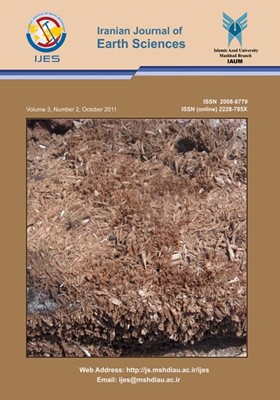Relationship between River Flow, Rainfall and Groundwater pumpage in Mikkes Basin (Morocco)
Subject Areas : Mineralogy
1 - Geology Department, Faculty of Sciences, Dhar Mehraz. Fez, Morocco
Keywords:
Abstract :
This paper investigates the relationship between river flow, rainfall and groundwater pumpage in the Mikkes stream during the period 1968-2009. The Mikkes basin is located in the north center of Morocco and consists of three different zones that represent diversified geologies. This basin includes a phreatic and confined aquifer in Saïs basin and a shallow aquifer in the Tabular Middle Atlas. Analysis of monthly medium flows between 1968 and 2009 shows an approximate oceanic system which is characterized by two hydrological seasons. First a period of high waters in winters which is conditioned by the pluviometric contributions and the second is a low water period in summer which is conditioned by evapotranspiration. The mode of this River can be called a pluvio- evaporal type. The high deficit of the Mikkes stream (between 1968-1979 and 1980-2009) is about 76% and could be the combined effect of drought and groundwater pumpage. Water table variations could be conditioned by climatic changes and regional geology. Actually, the annual water table variations show a drop in ground water levels, which is due to the combined effect of reduction in precipitation that has reduced the natural recharge of groundwater, and the increase in pumping which is increasing year by year for more than 80 years in this region. In addition, free-water tables are much more susceptible to pumpage when compared to the confined aquifer. Thus, the water table and piezometric heads of the Mikkes basin do not demonstrate a uniform sensitivity to the drought. High rainfall between 1995 and 1997 had affected the groundwater levels of Mikkes with an increase in piezometric level. The monthly piezometric variations of free-water table are characterized by a seasonal operation: groundwater recharge and discharge.


